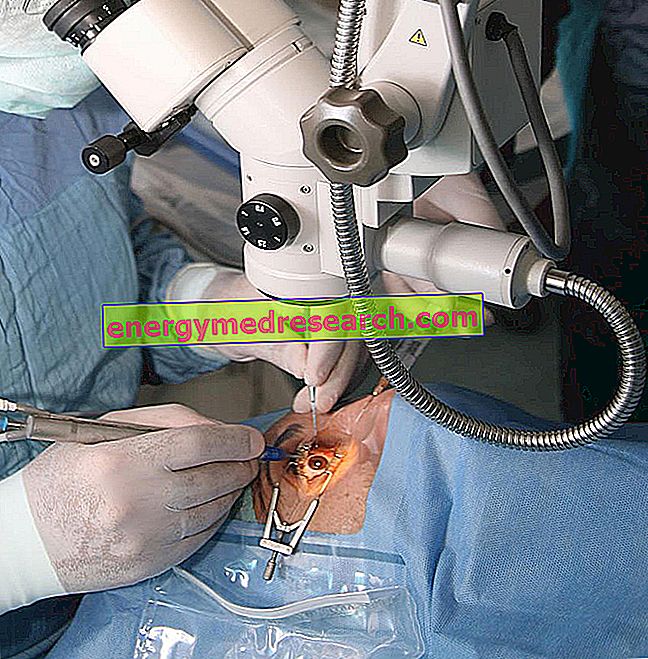
What is Suboxone?
Suboxone comes in white, hexagonal, sublingual tablets (ie to be dissolved under the tongue). Suboxone contains two active ingredients, buprenorphine and naloxone. Each tablet contains 2 mg of buprenorphine and 0.5 mg of naloxone or 8 mg of buprenorphine and 2 mg of naloxone.
What is Suboxone used for?
Suboxone is used by drug addicts who have agreed to seek treatment instead of the opioids they normally take. Opioids, also known as narcotics, are drugs such as heroin or morphine. Suboxone should be used for adults and young people over 15 years of age already followed from a medical, social and psychological point of view.
The medicine can only be obtained with a special prescription.
How is Suboxone used?
Suboxone should be used under the supervision of a doctor experienced in the management of opioid dependence. The patient's liver function must be evaluated before prescribing the medicine.
The method of use of Suboxone depends on the patient's condition, ie type of dependence, state of abstinence, possible replacement therapy already underway (eg methadone).
The recommended initial dose is one or two tablets of Suboxone 2 mg / 0.5 mg, which will then be adjusted according to the patient's response until it is stabilized. The daily dosage should not exceed 24 mg of buprenorphine. Once the patient's condition has stabilized, the dosing schedule can be adjusted or decreased. For complete dosage instructions, see the Summary of Product Characteristics included in the EPAR.
The tablets should be placed under the tongue and allowed to dissolve; this happens in 5-10 minutes.
How does Suboxone work?
Suboxone contains two active ingredients: buprenorphine, an opioid agonist (ie a substance that acts like an opioid) and naloxone, an opioid antagonist (a substance that fights the effects of opioids). Buprenorphine, in the form of sublingual tablets, has been used alone since the mid-1990s as a replacement treatment against opioid dependence.
However, we have seen that the tablets were used improperly, as the addicts dissolved them in order to inject the solution thus produced. In addition to buprenorphine, Suboxone also contains naloxone, which prevents any abuse of the medicine. When taken by mouth, naloxone is not absorbed, whereas if it is injected as an opioid-dependent patient it causes acute withdrawal symptoms.
What studies have been carried out on Suboxone?
The effects of Suboxone were first tested in experimental models before being studied in humans.
The main efficacy study of Suboxone compared this drug with buprenorphine administered alone or with a placebo (a dummy treatment) on 326 patients with opioid dependence (heroin addicts). The study lasted 4 weeks and measured the percentage of patients whose urine showed no traces of opioids at the end of the study. Patients also used a specially designed questionnaire to record abstinence crises, after which the variation of the score obtained with the questionnaire was measured before the beginning and after the end of the study.
What benefit has Suboxone shown during the studies?
Suboxone was more effective than placebo: 17.8% of patients treated with the medicine tested negative for urine tests at the end of the study, compared with 5.8% of patients treated with placebo. The abstinence score, between 62.4 and 65.6 before treatment, decreased to 29.8 after Suboxone treatment (and to 55.1 with placebo). The study also indicated that there are no differences in efficacy between Suboxone and buprenorphine administered alone.
What are the risks associated with Suboxone?
The most common side effects, that is found in over 1 in 10 patients, are insomnia, constipation, nausea, sweating, headache and withdrawal syndrome. For the full list of side effects reported with Suboxone, see the Package Leaflet.
Suboxone should not be used in patients who may be hypersensitive (allergic) to buprenorphine or naloxone or to any of the excipients. It must also not be used in patients with severe pulmonary insufficiency, severe hepatic insufficiency or acute alcohol intoxication odelirium tremens (a condition induced by abstinence from alcohol).
Why has Suboxone been approved?
The Committee for Medicinal Products for Human Use (CHMP) concluded that the combination of an opioid-like substance and an opioid antagonist constitutes an established strategy to reduce the possibility of substance abuse by intravenous injection, and has therefore decided that the benefits of Suboxone as a replacement treatment for opioid dependence are greater than the risks, recommending that it be given marketing authorization.
What are the only measures taken to ensure the safe use of Suboxone?
The company that markets Suboxone will prepare information programs for doctors and pharmacists, so that they are aware of the risk of abuse and report any specific problems in terms of the safety of the medicine, such as liver disorders and effects on newborns.
More information on Suboxone
On 26 September 2006, the European Commission granted a marketing authorization valid for the whole of the European Union for Suboxone to SP Europe.
For the full version of the evaluation (EPAR) of Suboxone, click here.
Last update of this summary: 08-2006.



